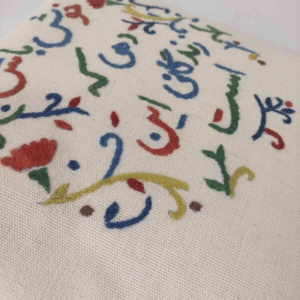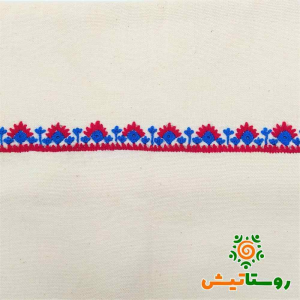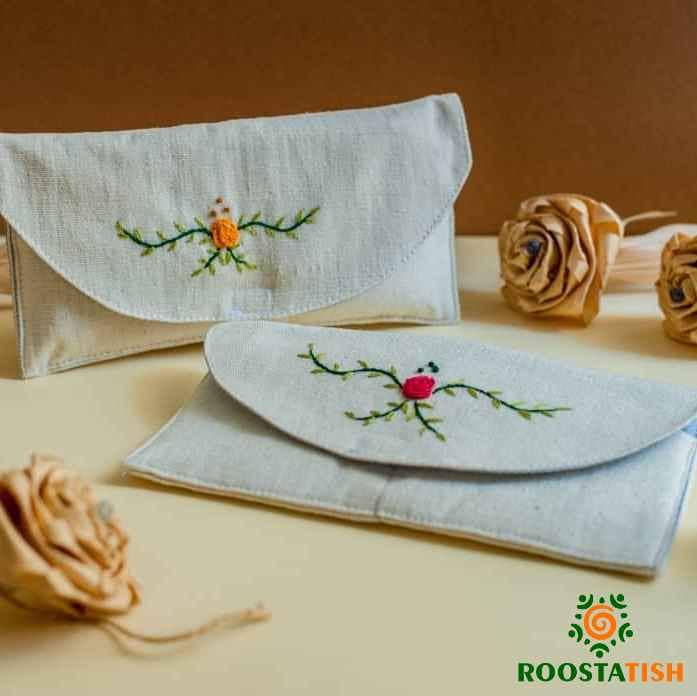The Different Types Of Persian Embroidery
Embroidery is one of the most original and beautiful Iranian arts. The variety of this art is so great that one can understand the authenticity and the region to which that embroidery belongs to, according to the use of colors and the type and method of sewing. It is stated in many books that embroidery is the art of decorating fabric with simple and colorful threads, and it has different types, among which are needlework, tapestry, patchwork, coin embroidery, golabton embroidery, etc.
“Roudoozi” or “Roukaari” is an art in which various patterns are created on fabrics without patterns or patterns by sewing or pulling a part of the weft of the fabric.
Roudoozi is one of the ways of fabric decoration which is done by needle.
The type of pattern, the threads used in the embroidery and the density of the stitches can also indicate the social status of the wearer of that dress.

In general, it can be said that different embroidery designs have unique characteristics that express the culture, environment and customs of people in different regions.
How long has embroidery existed in Iran?
The art of embroidery is very old, so traces of this art can be seen in the works left from the Achaemenid period. These works show that Iranians were very interested in luxurious clothes and decorating fabrics; But the oldest embroidery in Jamande dates back to the Seljuk era.
The remarkable thing about the embroidery left over from different periods of Iran’s history is that in the Sassanid era, the patterns used on the embroidery are very similar to the patterns used on sculptures, plaster casts, metal containers, etc.
In the Ilkhanid period, the influence of Chinese people’s art on embroidery is very evident.
But as it is evident from the evidence, during the Timurid period, the country’s embroidery artists were forced to migrate and most of the people who were skilled in this art traveled to the city of Samarkand. This is why no artworks from this period have survived.
The peak of the art of embroidery in Iran was the Safavid era. The progress of this art in this period has been so much that no trace of the influence of Chinese art can be seen anymore.
Among the common types of embroidery in the Safavid era, we can mention glabton embroidery, landre embroidery, pattern embroidery, ten-one embroidery, sequin embroidery, tapestry embroidery, cocoon embroidery, sekme embroidery, flower embroidery, glass embroidery, vermilion embroidery, pearl embroidery, and bergamot embroidery.

This art continued in the Afsharia and Zandiyeh era with the same glory as the Safavid era, until during the Qajar era, embroidery reached all the regions of Iran. It was during the Qajar period that embroidery, Zoroastrian embroidery, cashmere embroidery, cream embroidery, ajideh embroidery, samosa embroidery reached their peak and patte embroidery made remarkable progress.
How many categories are day embroidery divided into?
According to the research, some researchers believe that embroidery is divided into three categories and others believe that it is divided into six categories.
According to some who divide this art into three categories, the types of embroidery are:
Embroidery that sews all over the fabric with thread to create a pattern on it. Examples of this type of embroidery include Baloch needlework, Rasht crochet and Kerman patte embroidery.
The embroidery in which the thread passes through the weft of the fabric and creates a mesh and color for it. One of the examples of this type of embroidery is Isfahan needlework.
The first category: elaborate embroidery, whose main background is hidden under colorful stitches. Bukhara embroidery, pattern embroidery, crochet embroidery, patte embroidery, series embroidery, Mamqan embroidery, Baloch embroidery and Kurdish embroidery are examples of embroidery that are included in this category.
The second category: embroidery that only a part of them is sewn and the rest of the work is filled with the background color. Silk embroidery, cream embroidery, braid embroidery and double embroidery are among these types of embroidery.
The third category: there are embroidery that is sewn in a special way. Examples of this type of embroidery are Isfahan needlework and net embroidery.
The fourth category: embroideries made with metal threads. such as: glabton embroidery, ten-one embroidery, keram embroidery, cash embroidery and tapestry embroidery

Embroidery tools
Different tools are used in different types of embroidery, and the types of fabric and thread are the common tools of all these embroidery. It is natural that the type of thread and fabric will be different depending on the type of embroidery.
The most important use of day embroidery:
Rudozis are used to decorate rugs, tablecloths, cushions, pillowcases, shoes, clothes, mattresses, car seats, etc. The artists of different fields of embroidery are usually women and they also use these arts for wall hangings and handkerchiefs.
Examining the motifs used in all kinds of embroidery
In general, the motifs used in all types of embroidery can be divided into four categories: natural motifs, plant motifs, geometric motifs and animal motifs.
Natural motifs: These motifs are motifs that are related to nature and are designed with inspiration from it. Patterns such as the sun, trees, birds and…
Plant motifs: It is no secret that flowers and plants have a special place in Iranian handicrafts. These motifs are usually motifs that are first imprinted in the artist’s mind and then depicted. They sit next to each other as symbols of nature and are completely abstract. Of course, sometimes they step into the valley of realism and display a role of flowers. Flowers that often include bushes, marigolds, four-leaf clovers, and evening primroses, etc.
Sometimes plants and flowers are sewn together with other decorative items and sometimes separately, but the interesting point is
They are usually embroidered next to each other in a certain order.
Animal motifs: these motifs are sometimes abstract and sometimes real. Patterns that are often designed based on the characteristics of animals and are only a symbol of them.
Animal motifs are usually placed next to other motifs such as plants and flowers. The most animals whose images are used in embroidery are deer and peacocks. All kinds of slime designs and plants are also used to decorate around these motifs.
Geometric patterns: Geometric patterns play a big role in traditional Iranian embroidery. The basic elements of these motifs are triangles, squares and rhombuses.
Geometric motifs that are usually used in the embroidery of Sistan and Baluchistan are: Edink, Ben Tas, Topkeg, Shida, Hurdel, etc.
Broken motifs: Broken motifs are patterns that consist of several straight and oblique lines. These motifs are among the most basic embroidery motifs.
Gardan motifs: These motifs became popular in Iran from the beginning of the 9th century AH. In these motifs, flowers, flowers and simple rotating branches are usually used. These motifs are also called tangerine.
Motifs: These motifs include a set of different motifs that are abstractly or realistically placed next to each other. Patterns are usually formed in rhomboid frames on the fabric surface.
Today, the art of embroidery can be seen in Europe, Africa, Oceania, North America and Latin America. However, these embroidery designs are completely different from Asian and Iranian types.
with every purchase from Roostatish, you participate in a rural development project







